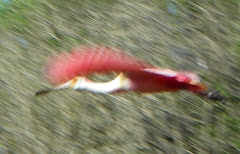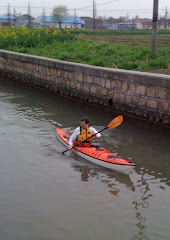Where is the world’s biggest volcanic caldera lake? Lake Toba in North Sumatra. And yet this remarkable lake did not appear on the map until 1852 when it was first seen by European eyes. Even then, stories of headhunters and cannibals deterred all but the most dedicated explorers from seeing it.
Order book Heart of Toba now in Paperback and Kindle.
 |
| Siallagan Village, Ambarita Samosir Island |
 |
| World Map shows location of Lake Toba in North Sumatra |
Toba is a super-volcano, one of just half-a-dozen active worldwide. When it erupted some 74,000 years ago it left a hole in the earth’s crust sixty miles long by eighteen miles wide. The explosion was equivalent to a stunning 2,800 times that of the Mount St. Helens1980 eruption in Washington USA. After Lake Toba formed in the basin, bordered by the steep caldera walls, a resurgent volcanic dome of magma pushed up the lake floor. This created Samosir Island, the “Heart of Toba”, an island rivaling in size UK’s Isle of Wight, or Anglesey, but rising to more than 2,500 feet above the lake (more than 5,000 feet above sea level)
 |
| Paddling toward the sacred volcano, Mount Pusuk Buhit |
At the south end of Toba, at Balige, I joined an Indonesian team brought together by our friend and kayaking guide Priyo Utomo. Our aim was to learn about the life and culture of the Batak people who live around the shores of the lake. Toba Batak have distinctive architecture well-suited to the seismically active area. They perform traditional dances and music, have a history of weaving, and hold strong beliefs. We would travel by kayak, making a circuit of the Heart of Toba, staying with, and learning from Batak families, making trips inland to visit sites of interest.
 | |
| Weaving on a backstrap loom outside house Sibandang Island |
Exploring Sibandang Island, a younger island than Samosir and the result of a smaller volcanic dome, we visited the home of a weaver who crafted the traditional ulos in her house on a backstrap loom. Sitting on a wooden platform on the floor, she adjusted the tension of the warp on the loom by straightening her legs against a foot-bar, pressing back against the back strap which gives this ancient type of loom its name. Toba Batak weavers are known for the ceremonial ulos cloths they weave. The yarn is often tie-dyed before weaving into Ikat fabric, creating patterns, sometimes like the shimmering of moonlight across a night-blue lake surface.
 |
| Iman Situmorang |
One of my personal goals was to learn what I could of the Toba paddling culture. Before Dutch colonial rule, travel was often easiest by water. The craft used were dugout canoes called solus. Large solus bolon, often sixty feet long or longer, were used for trade, transport, and war. Fishermen paddled shorter solus, built for one or two people. There are still many fishing solus, some dugout and others fabricated from plastic barrels, but the solus bolon fell out of favor when the Dutch built roads and motor ferries.
 |
| Fisherman paddling a dugout solu |
We traveled some days with Iman Situmorang, son of the celebrated Toba Batak poet and writer Sitor Situmorang, learning much about Batak history and tradition from him. On the shores of the lake as evening turned to night, we read Sitor’s poetry out loud. He wrote of dreaming of home, by the lake, while living far from here. Fleeting relationships, a brief love on the way from somewhere temporary to somewhere without meaning. Dreaming of returning to the place he knew and loved, knowing it will have changed, wondering if he could belong if he returned.
 |
| We are treated to live Batak music with a gondang band. |
Sitor Situmorang did come home to rest by the lake, after his death at his home in the Netherlands in 2014. His grave is a simple memorial near the shore at his birthplace Harian Boho. Sitor's journey is complete: ours was just beginning. Next, we would hike into the forest, or what remains of it. The overgrown site of a historic village marks an area once central to the trade of camphor, benzoin and cassia. It was once home to the Situmorang, the wife-giver family to the rajas Sisingamangaraja.
 |
| The grave of Sitor Situmorang, famous Batak poet. |
The stories I gathered were not yet fitting together. Ultimately, they would make sense, and the book Heart of Toba would come to life.
 |
| More about the Book |

































2 comments:
Merci pour cet excellent post j'ai beaucoup appris !
immobilier neuf
Heart of Toba. review
A beautiful and heartwarming account of a unique paddling trip combined with an insight of life on the shores of lake Toba (Sumatra, Indonesia)
The author and his wife are part of a group of local experts who give a deeper colourful understanding of people and life around the shores.
The challenges of kayaking as transport (some in the group are not so experienced in kayaking) around this enormous caldera lake give the book an orignal personal mix of descriptions of warm welcoming people, traditions, art, crafts, food, history & natural environment blended with perseverance of kayaking on the water.
In this book you get distinct descriptions of intimate aspects of life in this hugely charecteristic part of the world.
Nigel Foster has such a keen eye and sense of the heart of Toba it almost feels like you are paddling with the group and tasting delicious food each time you arrive at a different village.
Stef Kouijzer (the Netherlands)
Post a Comment